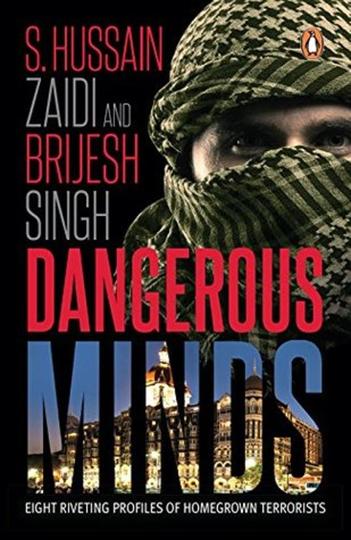The book — a fruitful collaboration between seasoned investigative journalist S Hussain Zaidi and IPS officer Brijesh Singh — warns its readers of the acts it enlists and about how these stories are mostly bewildering tragedies soaked in horror. Still, the eight profiles of home-grown terrorists in Dangerous Minds are riveting. The book explores “the lives, early beginnings, careers and sudden transformations of seemingly regular people into merchants of death.”
A very interesting facet of terror and crime proliferation is reflected in Abdul Karim Ladsaab Telgi’s profile. The man who exploited government mechanisms to commit a Rs 20,000 crore fraud by forging stamp papers got his early lesson in organized crime in prison. Clearly, the thoughtless exposure of petty offenders to hardened criminals has proved disastrous for society in general and law enforcement agencies in particular.
Then there is Malwa in Madhya Pradesh which saw the advent of sectarian conflict in crime much before Mumbai’s gangland was divided along communal lines. Malwa with its Wasseypur-esque backdrop was the ideal breeding ground for 20-year-old medical student, Abu Faisal. After five robberies in two years, Faisal and his belligerent brigade carried out targeted killings. His deep seated grouse against Indian judiciary was best at display when, during his trial, he didn’t bother to put up a defence and accepted all charges levelled against him.
Unlike Abu Faisal, Hanif Sayed relied on timing bombs so that they caused maximum mayhem. He found a deputy in his wife Fahmida. Aiming to avenge the atrocities on Muslims during the Gujarat riots, they formed the Gujarat Revenge Force. The couple, in fact, roped in their two minor daughters to pass themselves off as any other unassuming family visiting Mumbai, while scouting for public places to plant explosives. The couple settled on Zaveri Bazaar and Gateway of India as the ideal locations to cause maximum impact. The trial court awarded death penalty to both Hanif and Fahmida, and the Bombay High Court further upheld it.
The book does a parallel profiling of investigators and police officers who followed these criminals and attempted to anticipate their moves. Careers of Mumbai Police’s top brass such as Pradeep Sawant and Ranjit Sharma came to an infamous end after being arrested in the very case (stamp paper scam) that they had initiated. However, some other careers were embellished — the chase in Abu Faisal’s case by Dharamveer Singh Yadav (ATS Madhya Pradesh) and Hemant Barve proved successful.
The likes of Abu Faisal, Abdul Karim Tunda and Dr Jalees Ansari capitalized on the fear, fury and flawed perceptions of their community. Perhaps the reader should wonder why young and educated individuals give up their lives and careers to join this convoluted version of jihadist bandwagon. Is it the ignominy of imprisonment, custodial deaths, police brutality, extrajudicial killings or a general disenchantment of being a minority? The book shows that terror modules around the world ‘work insidiously on impressionable minds, selectively feeding them provocative information about alleged atrocities on Muslims around the world.’ Almost all of the eight dangerous minds profiled here were subjected to religious indoctrination. Convinced of their righteousness, they did not waver despite hurdles to the successful execution of their plans. Ultimately, these are tragic tales of lives wasted.



Leave a reply